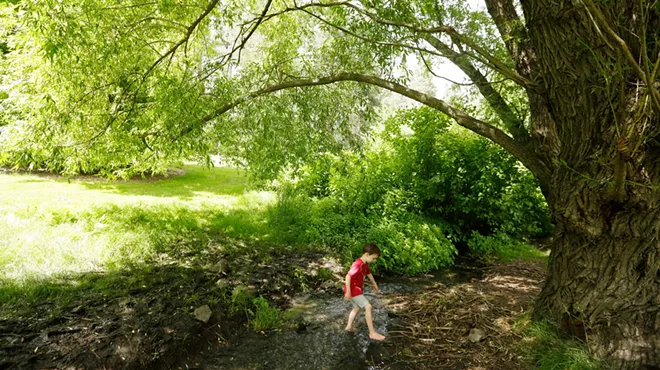
Growing up, rocks were a big deal in our family.
As members of Spokane's Rock Rollers Club, my grandparents won dozens of awards for their pristine petrified wood specimens displayed at the club's annual Gem, Mineral & Jewelry Show at the fairgrounds. Every summertime family road trip was peppered with pit stops at geological sites across the region, and one of our favorite places to play outside was simply called "the rock pile."
Since college, however, when I swiftly completed a Geology 101 assignment to find and identify examples of geologic activity (easy thanks to all that childhood exposure), I've hardly had a thought about rocks, crystals or fossils.
Yet, as I recently rediscovered, rockhounding — that funny term for folks who like to "sniff out" amazing natural specimens born from the Earth's crust — is alive and well in the Inland Northwest.
And helping guide amateur and experienced rockhounders alike to the area's best rock-hunting spots and more is the guy behind the growing YouTube channel, website and podcast series, Currently Rockhounding.
Like many of his fellow rockhounds, Spokane's Jared Goguen got into the hobby after a casual encounter. He was on vacation at the Oregon coast about six years ago when he and his wife decided to look for agates on the beach.
"After that I was hooked on the idea of finding rocks and wondered what else could be found," Goguen says. "With thousands of different rocks and minerals to learn about, locate and collect, no one person can know or find it all in a single lifetime, and this is what makes it the ultimate hobby — you will never master it and you will never do it all, so to speak."
Teaching others how to rockhound proved so successful that Goguen transitioned to running Currently Rockhounding's YouTube and website full time in spring 2020. He also has a podcast series called Previously Rockhounding that explores the hobby's history.
Goguen's foremost advice to newbie rockhounds is to simply enjoy being outside.
"It's important not to get too hung up on finding the very best things," he says. "Enjoy the process of exploring an area."
Fortunately for residents of the Inland Northwest, finding publicly accessible rockhounding sites is the easy part. From rocky mountains to desert scablands, the greater Pacific Northwest offers significant geologic diversity, and dozens of tried-and-true rockhounding sites are less than a day's drive from Spokane's urban core. While finding a prize-worthy specimen isn't guaranteed, that's what makes rockhounding fun.
One of Goguen's top local spots is the Colville National Forest, spanning 1.5 million acres across northeast Washington. Among the massive variety of rocks and minerals there are garnets, opal, calcite, pyrite, malachite, azurite, quartz crystals, serpentine and fossils, "to name just a few," he says.
Before setting out with a chisel and bucket, Goguen advises some key rockhounding etiquette. To make sure you're not trespassing onto private property, he recommends using an app like GaiaGPS to determine land ownership. If you're looking for cool finds on public land, rules still apply on what you can take and methods used to harvest, which vary based on the agency managing it.
"The best thing to do is to check their website first," he says, adding that rockhounds "should never take more than what you really need. Just because something is abundant doesn't mean you need buckets full of it."
Setting out on your own to find rockhounding sites isn't the only way to get into the hobby. Goguen also recommends some of the region's numerous fee-based dig sites open to the public and "pretty much a guarantee that you'll be going home with some amazing specimens."
Stonerose Fossils in Republic, Washington, is home of an ancient shale lake bed with 50-million-year-old fossils of plants, fish and insects. The Wild Turkey Mine in Valley, Washington, offers seasonal public access to its electric-green serpentine. And in Clarkia, Idaho, the Emerald Creek Garnet Area is a Forest Service-run site (reservation only) to harvest star garnets, a gem found only there and in India.
For those looking to dive deeper, head to Currently Rockhounding's website for guides on everything from tools, sites, safety tips, recommended books and much more. Goguen's YouTube channel — with a cumulative 2.1 million views — offers more than 350 videos and several curated playlists.
Rockhounding is accessible to essentially anyone, but Goguen also recognizes that it may feel a little overwhelming.
"If driving off into the mountains alone isn't the thing for you, then perhaps joining a rock and mineral club is the next step," he says.
"Here in Spokane, our local rock club is the Spokane Rock Rollers, which has monthly meetings, a full lapidary shop for cutting and polishing rocks, and programs for people with kids. During the summer months they have organized rockhounding field trips, which members can go on and do some rockhounding with more experienced rockhounds." ♦



























